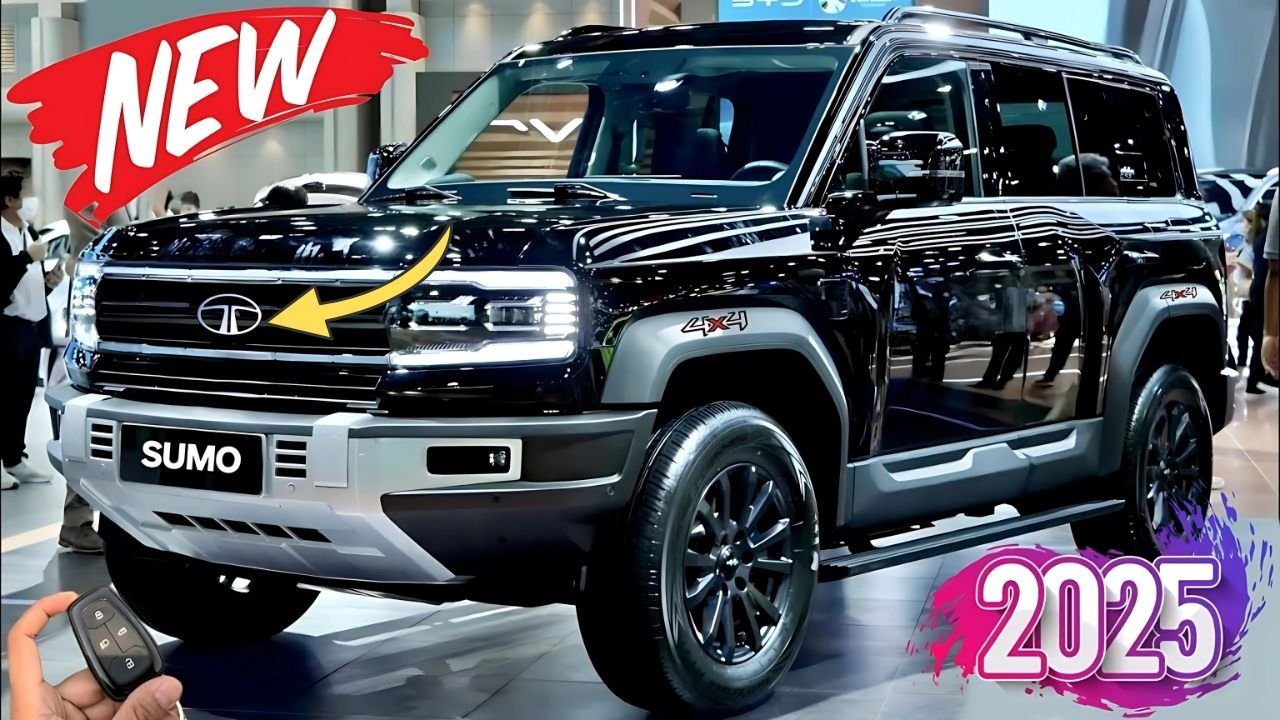India’s automotive market is buzzing with excitement as Tata Motors is reportedly preparing for a grand comeback of one of its most iconic vehicles – the Tata Sumo. Known for its rugged build, roomy interiors, and no-nonsense design, the Tata Sumo has held a special place in the hearts of Indian families, rural entrepreneurs, and government departments for decades. Now, the company seems ready to reignite that legacy with a new avatar, promising modern features and the same powerful presence.
The Legacy of Tata Sumo: A True Indian Icon
Launched in 1994, the Tata Sumo was among the first indigenously designed multi-utility vehicles (MUVs) tailored specifically for Indian roads. It wasn’t just a car; it was a symbol of Indian engineering strength. Built to navigate everything from pothole-riddled city streets to dusty village tracks, the Sumo quickly earned a reputation for being dependable, durable, and highly practical.
Named after Sumant Moolgaokar, a former Managing Director of Tata Motors, the Sumo broke Mahindra’s monopoly in the utility vehicle segment, especially challenging the Willys Jeep-based models. Within just three years of its launch, Tata sold over 1 lakh units—a number that reflected the vehicle’s immense popularity.
Evolution of the Tata Sumo Over the Years
Over its 25-year production journey, the Tata Sumo saw numerous upgrades to meet evolving consumer preferences and regulatory standards:
- 1996: Launch of Sumo Deluxe, a more refined version.
- 2000: Introduction of the Sumo Spacio with a larger 2.9-litre engine, tailored for both passenger and commercial use.
- 2004: Arrival of the Sumo Victa, which brought modern features like power steering, power windows, and keyless entry.
- 2007: Victa Turbo DI was introduced with improved styling and a relocated spare wheel.
- 2012: The Sumo Gold emerged with a 3.0-litre CR4 engine, offering more power, torque, and improved interiors.
- 2013: Final update with new air-conditioning, MP3 player, and fresh dual-tone colors.
Despite the rise of more premium and stylish SUVs like the Mahindra Scorpio and Maruti Suzuki Ertiga, the Sumo held its ground with its unbeatable utility and affordability.
Tata Sumo vs Mahindra Scorpio: Battle of the Beasts
Throughout its lifecycle, the Tata Sumo was a key competitor to the Mahindra Scorpio and Bolero, targeting customers looking for reliable and spacious vehicles at a reasonable price. While Scorpio offered a more modern look and advanced features, the Sumo countered with its ruggedness, cheaper maintenance, and exceptional value for money.
Also Read – छोटे परिवारों की पहली पसंद – New Maruti Alto 800 लॉन्च हुई नए लुक और जबरदस्त माइलेज के साथ
Interestingly, many taxi operators and rural users still prefer the older Sumo models because of their solid build, easy-to-fix mechanics, and ability to handle rough terrain without breaking a sweat.
Why the Tata Sumo Still Holds Emotional Value
In Indian towns and villages, the Tata Sumo often became a symbol of status. Owning a Sumo wasn’t just about transportation; it meant reliability, prosperity, and pride. It comfortably seated up to 10 people, making it the go-to vehicle for joint families, school transporters, and even government fleets.
Even after its discontinuation in 2019, the Sumo continues to be seen on Indian roads, especially in Tier-2 and Tier-3 cities. Its mechanical simplicity made it a favorite among roadside mechanics and ensured low-cost repairs.
Tata Sumo’s Comeback in 2025: What to Expect?
If reports are to be believed, Tata Motors is gearing up to relaunch the Tata Sumo in a brand-new avatar. The upcoming model is expected to carry forward the core DNA of the original—spacious interiors, high ground clearance, and rugged design—but with a modern twist.
Expectations are high that the new Tata Sumo could feature:
- A bold, masculine front grille with LED headlamps
- Modern infotainment system and advanced connectivity features
- New-age safety features like ABS, airbags, and EBD
- BS6 Phase II compliant or even electric/hybrid variant to align with Tata’s EV push
- A tough chassis and reliable engine for mixed usage (rural + urban)
If this comes true, the Tata Sumo could once again disrupt the market, possibly eating into the sales of vehicles like Mahindra Scorpio Classic, Maruti Suzuki Ertiga, and even Kia Carens.
Pricing and Segment
The old Tata Sumo Gold was priced between ₹7.28 lakh to ₹8.68 lakh (ex-showroom). If Tata positions the new Sumo strategically under ₹10 lakh, it could prove to be a game changer in the MUV segment, especially among customers looking for a budget-friendly yet spacious and powerful family vehicle.
Impact on Used Car Market
Despite its discontinuation, demand for the Tata Sumo remains strong in the used car market. Depending on the variant and condition, used Sumos still fetch prices between ₹5.81 lakh to ₹8.97 lakh. Many fleet operators and rural buyers continue to invest in older Sumos due to their low maintenance costs and reliability.
The Future: Will We See an Electric Tata Sumo?
With Tata Motors making big moves in the EV space, there’s also speculation that the future Tata Sumo may arrive with electric or hybrid powertrains. A rugged, electric multi-utility vehicle could open up a brand-new customer base, especially for eco-conscious fleet operators, schools, and rural cooperatives.
Such a move would blend heritage with innovation, giving India a utility vehicle that honors the past while embracing the future.
Final Thoughts
The Tata Sumo has always stood for practicality, durability, and Indian ingenuity. As the company teases its return in 2025, nostalgia and anticipation are both running high. If Tata Motors can successfully repackage the Sumo with a “dhansu look”, modern features, and competitive pricing, it may very well recreate the magic all over again.
In the crowded MUV space, where flashy features often overshadow real-world utility, the Tata Sumo can be the perfect blend of form, function, and legacy—just like it was back in the day.
Some Important Link
| Telegram Group | Click Here |
| WhatsApp Group | Click Here |
| Home Page | Click Here |










